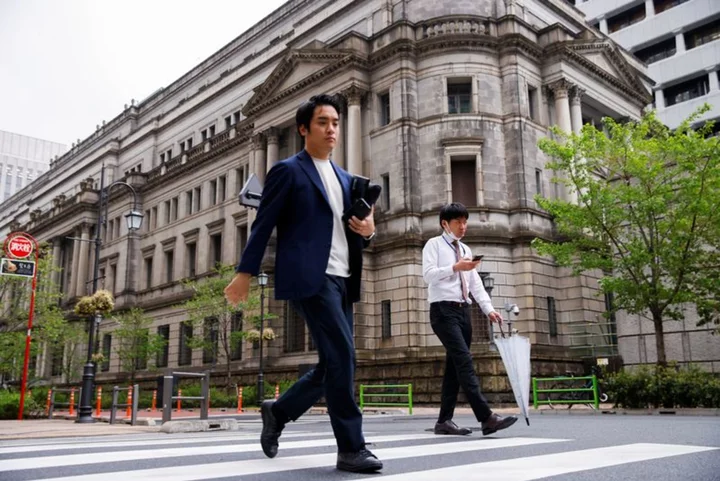By Leika Kihara and Takahiko Wada
TOKYO The Bank of Japan is expected to end its negative interest rate policy in April and keep raising short-term borrowing costs next year on heightening prospects of sustained wage growth, its former top economist Hideo Hayakawa said on Tuesday.
With inflation already exceeding the BOJ's 2% target for more than a year, the central bank tweaked yield curve control (YCC) in October to allow long-term rates to rise more - a move seen by markets as a step toward phasing out its huge stimulus.
While the BOJ maintains its 0% target for the 10-year bond yield under YCC, Hayakawa said the bank "effectively dismantled" the framework in October by re-defining what was a rigid 1% cap for the yield to a loose reference.
As the next step, the BOJ will likely raise short-term rates to around zero from -0.1% in April, when more data becomes available on next year's spring wage negotiations, he said.
"Service prices are already rising and prospects of seeing solid wage growth next year are heightening. But the evidence (on wage growth) isn't available yet," Hayakawa told Reuters in an interview.
"The BOJ is just waiting for more evidence" that inflation will sustainably hit 2%, Hayakawa said. "Once that's available, BOJ will end negative rates."
When exiting negative rates, the BOJ can maintain YCC in its current form and use it as a backstop to deal with any abrupt spike in long-term rates, he added.
"With the tweak in October, YCC has become something similar to exchange-rate intervention, in that the BOJ can intervene only when needed to arrest abrupt rises in long-term yields."
The BOJ's ultra-loose monetary policy, made up of YCC and negative short-term rates, has drawn criticism from analysts and some politicians for causing sharp yen falls that boost import prices and the cost of living for households.
While the BOJ revised up its inflation forecasts last month, it has stressed the need to keep ultra-easy policy until the recent cost-driven inflation turns into price rises underpinned by solid domestic demand, and accompanied by higher wages.
Hayakawa disagreed with the BOJ's view that recent price rises are driven predominantly by cost-push factors, saying its projections are underestimating already mounting inflationary pressures from domestic demand and service prices.
"The BOJ has intentionally been behind-the-curve" in addressing inflation as it awaits evidence of sustained price rises, Hayakawa. "That means once it ends negative rates, it needs to keep hiking at a faster pace than markets expect."
After exiting negative rates, the BOJ will likely need to keep raising short-term rates at a pace of around once every quarter throughout next year, he said.
"The BOJ doesn't necessarily have to hike as quickly as the U.S. Federal Reserve. But it does need to communicate to markets that once short-term rates are moved up to zero, it won't keep them there for too long."
(Reporting by Leika Kihara and Takahiko Wada; Editing by Shri Navaratnam)

